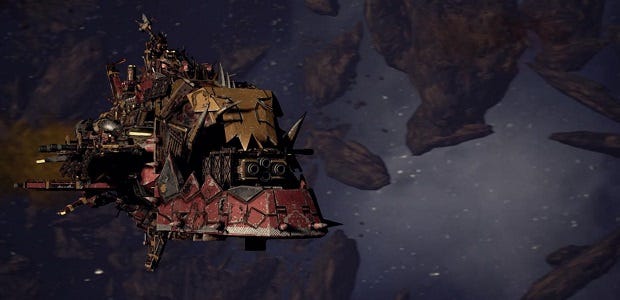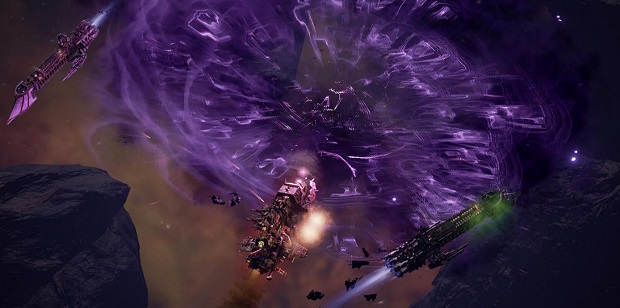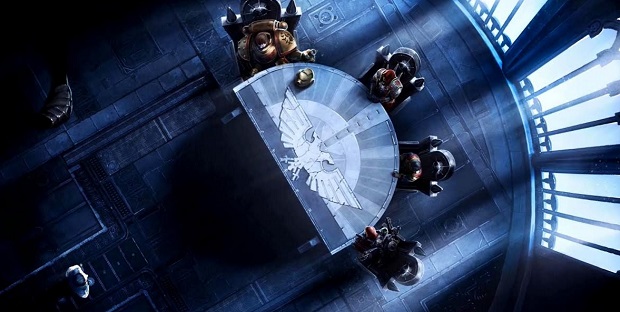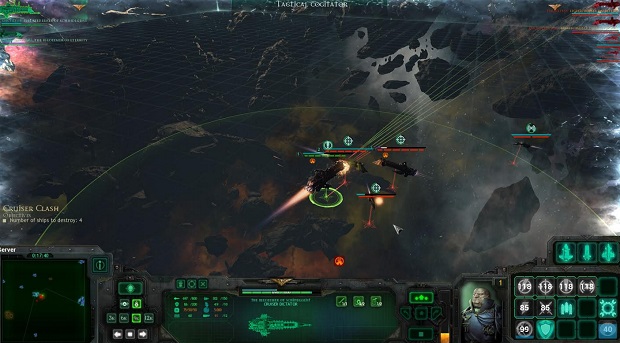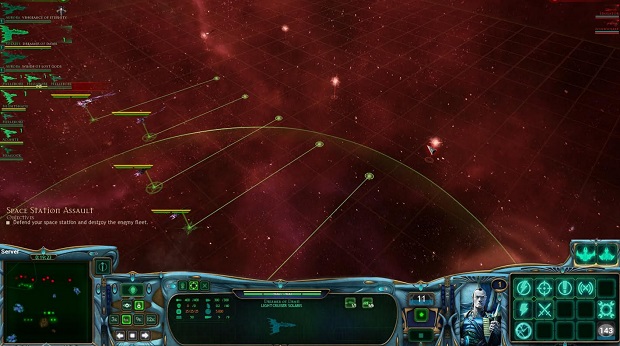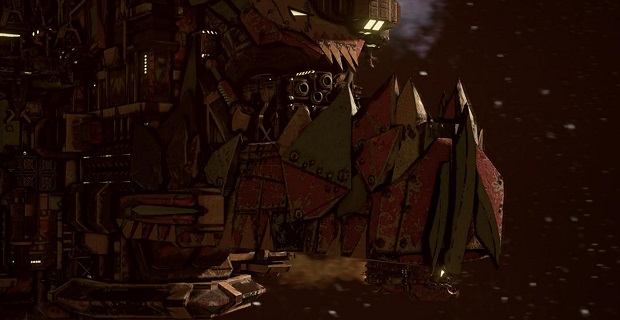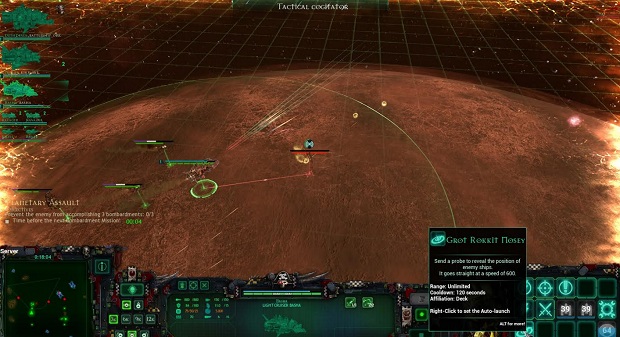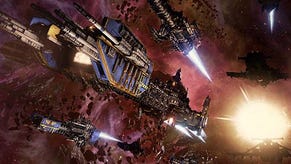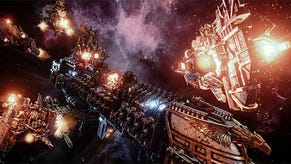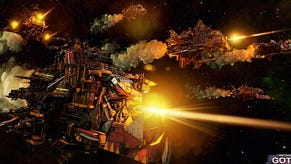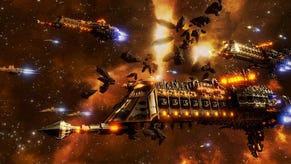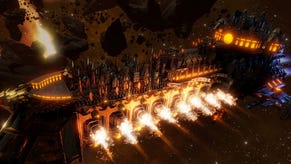Wot I Think: Battlefleet Gothic - Armada
Imperial
Battlefleet Gothic: Armada [official site] is based on a now-defunct table-top game set in the Warhammer 40K universe. And that means that it comes with the same funky blend of fantasy and sci-fi you've come to expect from Games Workshop. Orcs are now "Orks." You plan via a "Tactical Cogitator," that kind of thing. 40K is as familiar as a piece of well-worn furniture around these parts, but if you're not accustomed to the world it can all be a little obtuse. Whether you're drawn in by the setting or have to cut through the silliness and jargon, you might be in for a treat. This is one of the best real-time tactical games I've played in quite some time.
For those not familiar with Games Workshop's oeuvre, here are some basics. Most of their table top games operate on a points system. Skirmishes work by having two (or more) players select which units they want to field. In this space setting, big bombastic battlecruisers may cost 200-or-so points. Smaller support ships could run 30. Each player has a cap, say 600 points. You can bring whatever you want to the bout so long as you don't exceed that limit.
Battlefleet Gothic: Armada works just the same. Each match - be it in the campaign, multiplayer or a customised one-off battle - will have you choosing one of four factions (Imperium, Ork, Eldar, Chaos) and then constructing a fleet before you deploy (i.e. position) them and commence with murder-killing. Whoever forces a retreat or accomplishes the mission objectives wins, and that's it. Except it's not.
Translating a pure, turn-based table-top experience into a digital, real-time one is a Herculean feat. This is a game where everything from firing arcs to targeting priority matter quite a bit. And even with a handful of ships on-screen, you can't micromanage all of them as you would with real-world miniatures. As a designer, the options are either to make the game run so slow that it moves like molasses uphill in winter, or to cut out a lot of the tactical finesse you want your players to wield in order to keep things moving at a decent clip.
Battlefleet Gothic: Armada balances the two by shifting between time-scales with the press of your space bar. And while that sounds about as exciting as weekend spent sorting through tax documents, it's an exceptional compromise and a vital feature.
Even the smallest engagements can get quite complex in a hurry. Torpedoes are one of the most powerful weapons in the game, but unlike turrets or laser cannons they won't automatically track their targets. Instead, they fire in broad cones. And because the missiles take time to reach their targets, unless you're maneuvering your space-boats with care, your salvos aren't likely to hit. Where any given ship is facing matters. It pays to plan your approach, and keep as many guns active and tearing through Orkish hides as possible.
That's where tactical maneuvers come in. Most ships can fire thrusters to make hard turns, or burn a huge amount of fuel to max out their speed for a few seconds. These tricks are essential to master because they can move you out of the line of incoming attacks, or position a rival in just the right spot. They all pull from a limited combustion meter, and once it's gone, you won't have access to any of your stunts until it refills.
In-game these systems play together beautifully. I found myself pulling in targets to chase my quicker ships before moving in with the big guns. In critical moments, I'd crank the thrusters to full and ram my foes, forcing them into an asteroid field or impending torpedo barrage. It's a lot to manage, but I always had something to do, whether it was an ambush or an all-out full frontal assault, each tactic I ran with had me giggly with glee. "Holy hell, that worked?!" I'd shout right after cleaving a dreadnought in two with a giant, ship-mounted spear. And that was before I started playing with each ships' special abilities.
As you play, either in multiplayer games or in the extensive single-player, you'll earn renown. You can spend that on ship upgrades to unlock new options that range from massive AOE plasma bombs to fighter squadrons. Once you've earned a few, Battlefleet gets even more deliciously nuanced. With a half-dozen skill-laden boats in your flotilla, you'll be juggling their techniques and cooldowns all the time. Never have I felt control groups and mini-map navigation to be so crucial. Battlefleet is all about tactics, and players that drool over fine-tuned micromanagement will love the breadth and depth of tools at their disposal.
Multiplayer matches thrive on this customization. Each game was distinct. My opponents and I had an ever-shifting roster of admirals and flagships with personalized stats and tactics. More often than not, I was in suspense - eager to see just what my enemy had cooked up. Much like the table-top game on which Battlefleet is based, you'll never know exactly what you're getting into, and what kinds of powerful abilities your enemies have. And while that often means you'll fall into a trap you couldn't predict, it's that veil of ignorance that keeps games with others so exciting.
But, and I can't believe I'm saying this, the biggest draw for me was the campaign. It's not exactly news to RTS fans that single-player modes are often shite. It's a rule that's been consistent for as long as I can remember. Sure you can conjure up counter-examples, Starcraft and Rise of Nations come to mind, but there aren't many stand-outs. And don't get me wrong, Battlefleet's story is a shambling wreck. It's packed full of storytelling's most egregious sins like the excessive use on unexplained proper nouns and buckets of melodrama, but it is a joy to play regardless.
Battlefleet Gothic sets up a galaxy full of planets and stars that need defending from the encroaching Chaos. You're a space captain (or maybe an admiral, it doesn't matter either way) and you're leading your empire's defense against the Ultimate Evil. Along the way you'll have to beat back hordes of pirates and mercenaries to maintain control and cohesion of your star systems. Each turn you'll select one of several missions you can run, and within a few turns you'll gain control of multiple fleets. Then, you'll fight several battles per round before you regroup, heal-up, upgrade, and jump back into the fray.
Battlefleet Gothic succeeds because it doesn't treat the failure of one mission as invalid. Instead, your rewards are lessened, and you risk some more significant consequences down the line. You can savescum if you like, but you'll wind-up at the beginning of your turn, which often means having to repeat a 20-minute skirmish. So you're encouraged to live with loss and carry on regardless. You can't even give-up a match without losing access to your ships for a turn. It's often frustrating, but in the best way.
If you lose, it's your fault and you have to live with those consequences. It gives weight and meaning to your tactical prowess or shortcomings. And while I took occasional dips into the online multiplayer for the sake of this piece, I couldn't stop myself from jumping back into the campaign time and time again.
I've spent a few days playing Battlefleet Gothic at this point, and I don't have all that many criticisms. I've a few small complaints, such as wishing the camera would pull out farther, and I wish the it was easier to see the specialties of ships as you're selecting them, but almost everything about BGA is impressive. It captures the essence of its inspiration while faithfully translating the experience into the digital, it's got an attractive and stark aesthetic, and I'm still giddy over the one time I rammed a battlecruiser through three frigates and destroyed them all without stopping.
More than anything, it's left me with a wide grin and itchy fingers, and as soon as I'm done here I'll be jumping right back into the game.
